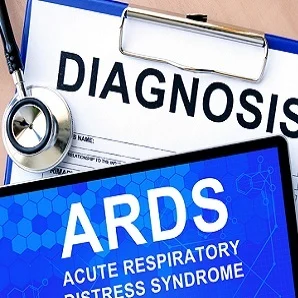Acute respiratory distress syndrome (ARDS) is a serious disorder that causes severe hypoxia requiring mechanical ventilation. It affects approximately 200,000 patients in the US each year, accounting for 10% of ICU admissions and a mortality risk of 25-40%. In many cases, patients also develop dysfunction of other organs that leads to high morbidity and mortality.
Over the years, it has been observed that patients who survive ARDS develop a range of neurocognitive changes because of the chronic state of hypoxia during the illness. These patients consistently have lower scores on all types of cognitive tests and lead a poor quality of life. Survivors also experience repeated admissions to the hospital, have marked limitations in exercise endurance as a result of compromised lung function and continue to have significant psychological morbidity. A large majority of the patients are unable to return to work and remain disabled. These neurocognitive changes often persist for months after discharge.
In this review, researchers looked at the pathophysiological mechanisms that underlie the neurocognitive impairment following ARDS, risk factors, and possible interventions that may mitigate the risk of cognitive impairment.
The risk factors for cognitive impairment include neurological injury, pre-existing cognitive impairment, mechanical ventilation, delirium, sepsis, sedation, and ongoing systemic inflammation. These risk factors work in synergy to cause cognitive impairment. The mechanism of this impairment is not clear in all patients. In those with brain injury who develop ARDS, the neurocognitive impairment may be related to the activation/inhibition of CNS neurotransmitters, release of various cytokines, neurogenic pulmonary oedema, the effects of positive pressure ventilation on the cerebral microcirculation causing elevated intracranial pressure and sensitivity of the patient to volume status and use of inotropic agents.
The integrity of the blood-brain barrier in patients with ARDS is often disrupted. This barrier plays a vital role in preventing toxins from entering the brain, and any disruption as a result of systemic inflammation or elevated ventilatory pressure can cause it to become leaky, allowing systemic cytokines and other toxins to enter the brain. The greater the damage to the blood-brain barrier, the higher the risk of neurocognitive dysfunction.
Unfortunately, there is no sensitive in-vivo method of assessing the integrity of the blood-brain barrier. Thus, in order to avoid the neurocognitive decline in patients with ARDs, clinicians should minimise the use of high ventilatory pressure and avoid elevated tidal volumes. At the same time, the use of sedatives, analgesics, and neuromuscular blockers should be minimised. Patients should have optional haemodynamics, and extreme hypotension and hypertension should be prevented. Fluid balance should be closely monitored, and precautions should be taken to ensure that the patient does not develop delirium.
Most ICU provide the best care possible for ARDS patients, but in some patients, it can become quite challenging. Some patients can develop multi-organ dysfunction, and may frequently require dialysis, antibiotics, and vasopressors. Simply minimising the use of medication and tidal volumes may not always be an option. Rather than focusing on reducing neurocognitive decline following ARDS, research efforts should be guided towards making an early diagnosis of ARDS and managing it with a multidisciplinary team that is dedicated to the care of such patients.
Source: Critical Care
Image Credit: iStock
References:
Sasannejad C et al. (2019) Long-term cognitive impairment after acute respiratory distress syndrome: a review of clinical impact and pathophysiological mechanisms. Critical Care, 23(352).
Latest Articles
cognitive impairment, acute respiratory distress syndrome, ARDS, ICU, blood brain barrier
A new review explores the pathophysiological mechanisms underlying cognitive impairment following ARDS and discusses interventions that could mitigate the risk of cognitive impairment.










